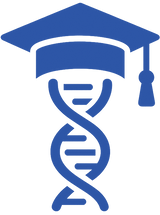The COVID-19 pandemic has caught the whole world by surprise. Suddenly our lives took a 180 degree turn. We are learning to get used to what people call “the new normal”. We have been dealing with the fear, new rules, and social isolation.
Scientists from all over the world are facing this same scenario of total uncertainty, trying to fight what seems to have become the world´s most publicized enemy.
The problem is that everything´s still very recent and although we have made great progress since the discovery of the virus, there are still a lot of things that we don´t know.
COVID-19 seems to affect all groups, however higher mortality rates are observed amongst the elderly, and people with comorbidities such as hypertension, diabetes, cancer, and cardiovascular diseases1.
Some authors believe that obesity should be considered a risk factor since it was previously associated with increased mortality in patients with H1N1.
This is because obesity is associated with decreased respiratory capacity and lung function.
Moreover, the increased inflammatory cytokines associated with obesity may contribute to the increased morbidity in obese COVID‐19 patients2.
That is one reason why researchers are investigating the role of nutrition on COVID-19 susceptibility and long-term consequences.
Obesity can be associated with the Western diet which tends to be high in saturated fats, refined carbohydrates and sugars, but low in fiber, unsaturated fats, and antioxidants.
Consuming high amounts of saturated fatty acids can impact the immune system’s response, making it harder for the body to fight and kill viruses.
Besides the fact that consuming saturated fats leads to an inflammatory state, including in the lungs, which could contribute to COVID-19 pathology3.
That´s why at times like this we need to look more closely at our food habits, especially the nutrients we eat. Several nutrients help in the functioning of our immune system.
As an example, we have vitamins A, B6, B12, C, D, E, and folate4.









